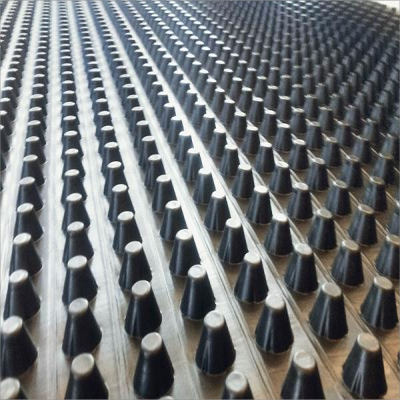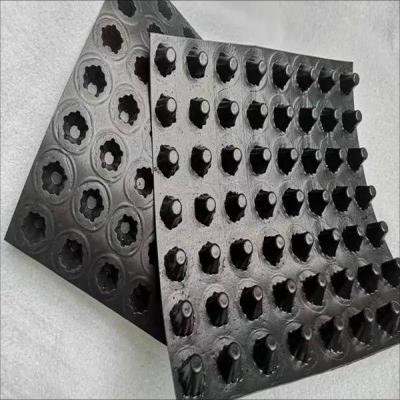In civil engineering, foundation treatment and soft foundation reinforcement, vertical Plastic drainage board It is a commonly used drainage material, so what are its installation methods? Let’s take a look below.
Vertical plastic Drainage plate ,It is an indispensable drainage material in foundation treatment, mainly composed of core board and filter membrane. The core board is made of polyethylene plastic, has concave-convex cross-sectional shape and continuous drainage channel; The filter membrane wraps the core plate Non-woven geotextile ,Able to prevent dirt and impurities from entering the drainage channel. The vertical plastic drainage board has a unique structure, which can quickly discharge water in the foundation and improve the bearing capacity and stability of the foundation.
1. Preparation before installation
1、Construction site preparation: The reinforced section should be measured and lofted, and the turf and sundries on the original ground should be removed. Then roll the site to ensure that the ground is smooth and dense. Finally, lay a layer of coarse sand or pebble cushion as a horizontal drainage channel, generally not less than 50 thickness cm, Also ensure that the quality of the underlayment meets the design requirements.
2、Preparation of construction machinery and materials: According to the actual construction situation, select a suitable plug-in machine for installation. It is also necessary to check and accept the plastic drainage board to check whether its variety, specifications and quality meet the design requirements. Also prepare necessary auxiliary tools and materials such as tube boots, pile tips, tape measures, sickles, etc.
2. Installation steps
1、Positioning of machines and tools: In the reinforced section, according to the design and construction drawings, release the exact point of each plastic drainage board, and mark it with small wooden stakes or bamboo stakes. The board insertion machine is installed according to the principle of driving from low to high, ensuring that the center of the pile hammer is positioned at the same point as the ground, and controlling the verticality between the pile hammer and the tower.
2、Install the plastic drainage board and pile tip: Pull the plastic drainage board out of the drum of the board inserting machine, penetrate it from the pipe shoe through the sleeve, and fix it on the pile tip. Make sure that the drainage board is firmly connected to the pile tip to prevent it from falling off during insertion.
3、Setting the casing: Start the vibrating hammer and slowly press the casing into the foundation. In the process of immersing the tube, attention should be paid to controlling the verticality of the casing to prevent deflection. When the casing penetration depth is close to the design depth, it is necessary to slow down the immersed tube speed to ensure the accuracy of the insertion depth.
4、Set to the design depth: According to the depth required by the design, continue to vibrate the immersed tube until it reaches the predetermined depth. The plastic drainage board is arranged vertically in the soft soil foundation due to the resistance between the pile clamps and the soil.
5、Lifting sleeve and shearing plastic drain board: After confirming that the drain board has reached the design depth, slowly lift the sleeve. Observe the sleeve insertion hole. If the drainage plate does not move relative to the sleeve, it means that the drainage plate is returned. Continue to lift the casing until the drainage board moves and pumps into the casing, and measure the lifting height of the casing at this time, which is the return amount of the drainage board. When the bottom of the casing is off the sand surface 50 cm When, use a sickle to cut off the drainage board to ensure that the exposed length is controlled at 20 cm Above.
6、Move to the next pile position: After completing the installation of one pile position, move the board inserter to the next pile position and repeat the above steps for installation.
3. Quality control and precautions
1、Strictly control the installation quality: ensure that the installation depth, spacing, verticality, etc. of plastic drainage board meet the design requirements. For the case of large amount of return, measures should be taken to reduce the occurrence of return.
2、Protect the drainage board: During the installation process, protect the drainage board from damage or contamination. Especially the filter membrane part of the drainage board, once damaged, will seriously affect the drainage effect.
3、Keep construction records: Make detailed records of the installation status of each drainage board, including information such as installation depth, return volume, exposed length, etc., for subsequent inspection and acceptance.
Post time: Feb-21-2025





